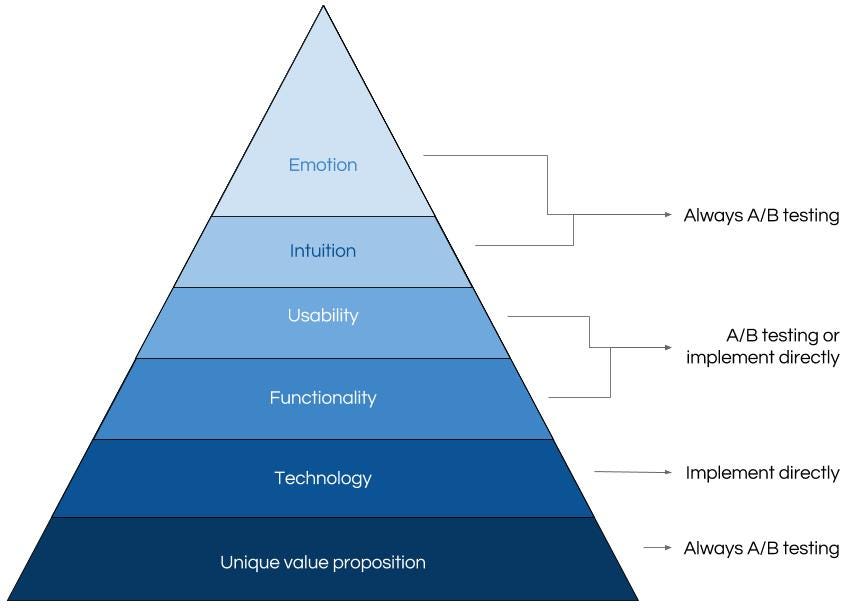.webp)

Every year, the (Dutch) Shopping Tomorrow initiative brings together a large group subject matter experts (450 this year) to tackle specific busnisess challenges about — you guessed it — how consumers are shopping in the near future (tackling both online and offline).
In 2016 I was part of the ‘Revenue Optimization’ group for the second time. Together with 18 other experts improved on the process of optimizing on-site revenue that we first created in 2015.
Here I’d like to share the main findings that we published in our (Dutch) whitepaper [download].
Also see my next article: Proving the monetary value of A/B testing.
We created a model to see where you stand regarding conversion optimization in your company. We defined 7 area’s that can be scored on a scale from 1–5:
The table below gives you a global idea of the different levels for each:

We also created a neat website (in Dutch) where you can calculate your own CR Maturity score: https://mijnconversiescore.nl/.
So ok, nice to know the competencies you need and where you stand right now, but how does the process itself look like?
Well, according to it will (basically) look like this for all companies on Level 2–5:

CRO Priority
So when you have your list of ideas, where do you start? How do you prioritize?
For this we made combination of the PIE (Potential Importance Ease) model and the ConversionXL (PXL).

If prioritizing your testing ideas is an issue for you, I’d highly recommend reading 4 Frameworks To Help Prioritize & Conduct Your Conversion Testing.
Looking at the CRO version of Maslovs piramid, we made the following choices:

For example: if you find a SSL security issue during a usability test, you’re not going to A/B test how that impacts conversion: you just implement it. But when there are issues with usability of functionality, it depends on the issue if you want to test it or implement it directly.
See the complete presentation and cases on slideshare (in Dutch).
Hope this is useful to you, if you have any specific questions about the Dutch resources I linked to, let me know :).
One final personal note I want to add: At Euroflorist I’m working with all of the above and a great help with all of this is our CRO Project Management tool: Effective Experiments. We are very happy with how this tool structures the process, guides the CRO team, documents everything and (partially automatically) keeps the rest of the organization involved and informed about what is going on in the optimization team. If you are a level 2 or higher, I’d highly recommend you give it a try!

Most of my content is published on LinkedIn, so make sure to follow me there!


Recently I've seen some (often absolute) statements going around, generally in the line of "open source commerce platforms are a terrible idea". Now of course different solutions always have different pros and cons.

A hierarchy of evidence (or levels of evidence) is a heuristic used to rank the relative strength of results obtained from scientific research. I've created a version of this chart/pyramid applied to CRO which you can see below. It contains the options we have as optimizers and tools and methods we often use to gather data.